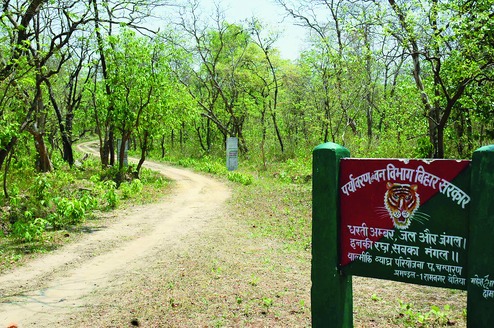
The Valmiki Tiger Reserve
Patna, Oct. 5: Bihar is planning to reintroduce rhinos in Valmiki Tiger Reserve in West Champaran district along the India-Nepal border, around 225km northwest of Patna.
'Our department and National Tiger Conservation Authority had approached the Wildlife Institute of India (WII) to make a site study, assessment and viability of reintroducing rhinos in Valmiki,' Bharat Jyoti, additional principal chief conservator of forests (wildlife), told The Telegraph today. 'It has submitted its report and identified suitable sites. We will now take it forward from here.'
There are around 3,300 wild greater one-horned rhinos - scientific name rhinoceros unicornis - left in the world, of which 75 per cent are in protected areas in Assam. The rest are in protected areas in Bengal, Uttar Pradesh, and Nepal. One of five surviving rhino species in the world, it is also called the great Indian rhinoceros, and is listed as 'vulnerable' by the International Union for Conservation of Nature.
'We will take help of rhino experts and scientists from all over the country,' Bharat said.
A special meeting has been held in Patna with experts from the WII, Manas National Park in Assam, and the Wildlife Trust of India.
'The WII report has predicted a good rhino habitat in river-fed forest and tall grassland of Madanpur block of Valmiki Tiger Reserve as well as the contiguous Sheopur range of Sohagi Barwa Wildlife Sanctuary in Uttar Pradesh,' said a source in the forest department. 'It also found that 102 kinds of plants eaten by rhinos are available in Madanpur.'
Valmiki Tiger Reserve is spread over 899 sq km - 598 sq km of core area and 301 sq km of buffer area. Madanpur block is of over 81 sq km, while Sheopur range is around 20sqkm.
'Madanpur area has the potential to support a population of nearly 20 rhinos,' the WII report said.
The report has, however, pointed out activities such as cattle grazing, grass cutting and burning by people settled around the forest, and said that 'the first and foremost step towards rhino reintroduction is to control these disturbances'.
It has also suggested that underpasses and barriers should be constructed along the railway track that runs through Madanpur block to ensure wild animals are not killed or injured. In 2001, three rhinos - two males and a female - from Chitwan National Park in Nepal had settled down in Valmiki to breed, but the female was killed when it collided with a train. Another female rhino, which had strayed into Valmiki from Chitwan in 2011, was shot dead by poachers who took away its horn.
Several rhinos from Chitwan were swept into Valmiki in the floods this year. A joint operation by forest officials from Nepal and Bihar managed to rescue eight rhinos and transport them back without injury.
The Nepal government also awarded Valmiki officials for the effort.
The WII report advocates bringing the Sheopur range of Sohagi Barwa Wildlife Sanctuary in Uttar Pradesh under the administrative control of Valmiki Tiger Reserve for consolidation of the rhino habitat.










